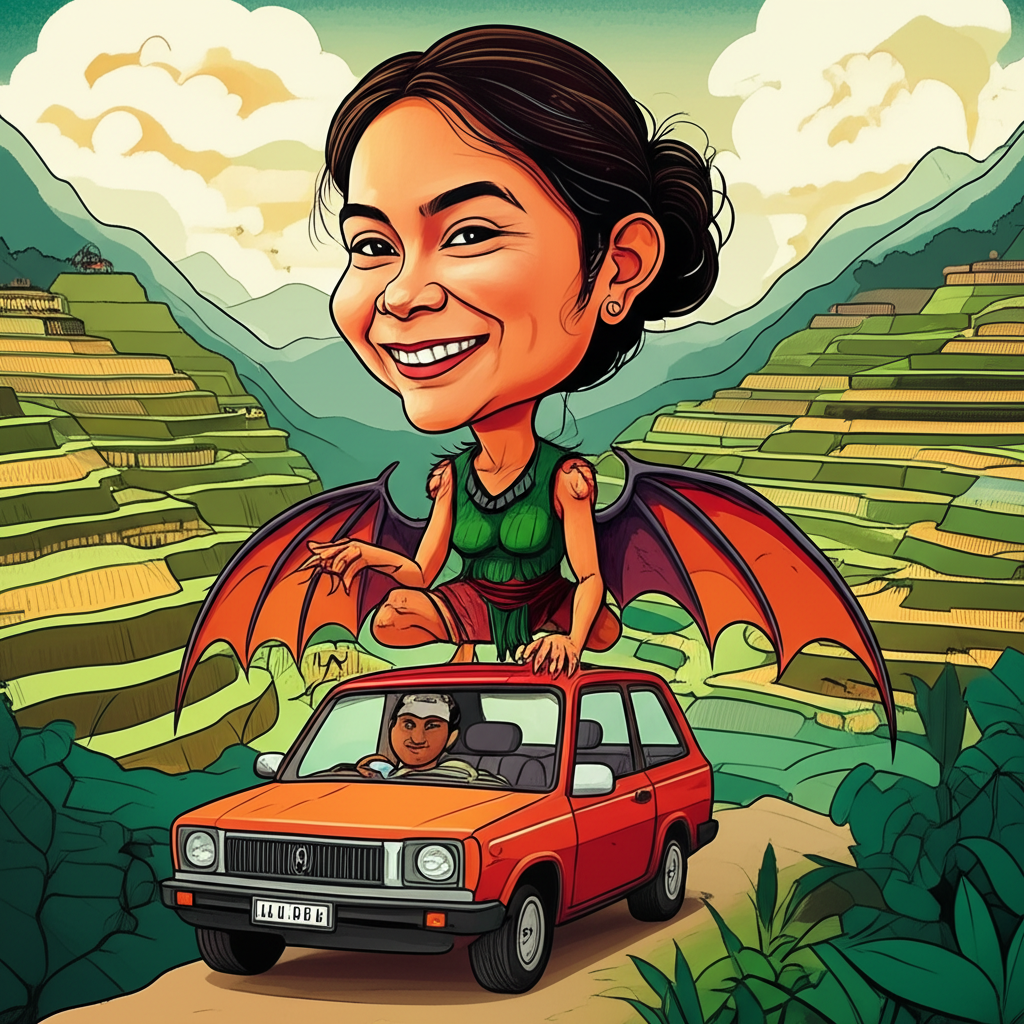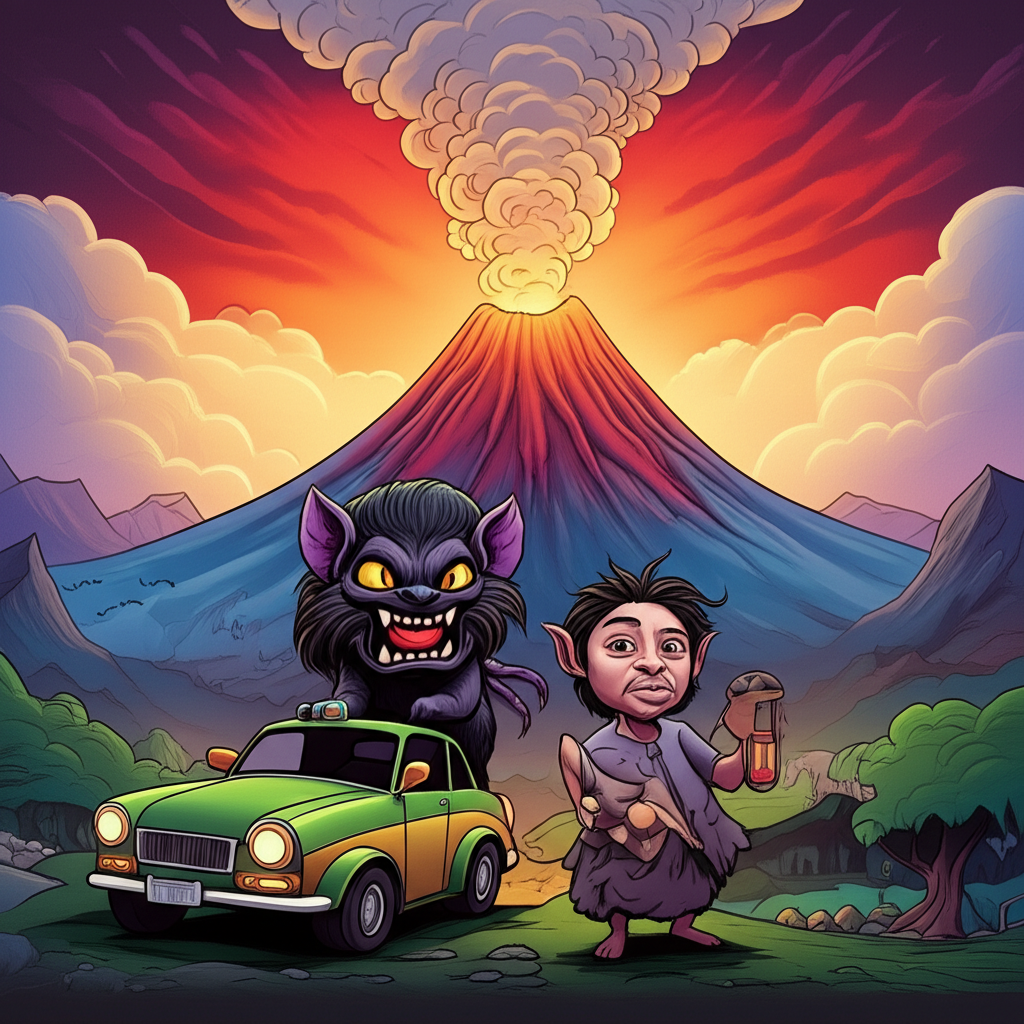
The whisper of the wind through the dense, emerald embrace of the Philippine archipelago carries tales as old as the islands themselves. Among these, none are perhaps as vividly etched into the collective memory as the legend of the Manananggal, a creature whose chilling narrative intertwines with the majestic, often volatile presence of Mayon Volcano. This is not a testament to divine power or a call to worship, but a window into the rich tapestry of mythology and folklore woven by ancient peoples, a story passed down through generations to explain the unexplainable, to personify fears, and to reflect the profound connection between humanity and the formidable forces of nature.
Our journey into this ancient narrative begins in the pre-colonial Philippines, a land teeming with lush rainforests, volcanic landscapes, and a vibrant, animistic worldview. During this era, the natural world was not merely a backdrop but a living, breathing entity, imbued with spirits and forces that governed life and death. The rustling leaves, the crashing waves, the rumbling earth – all held meaning. The concept of Anito, ancestral spirits and deities, permeated every aspect of existence. People sought to understand the world through stories, parables, and the intricate dance between the seen and the unseen. The environment was often harsh, marked by unpredictable typhoons, the ever-present threat of famine, and the awe-inspiring, sometimes destructive, power of volcanoes. It was within this context of profound respect and fear for nature that the legend of the Manananggal took root.
The Manananggal, a name that evokes a sense of separation and fragmentation, is a creature of duality and dread. In its human guise, it appears as a beautiful woman, often adorned and alluring. However, as twilight descends, a terrifying transformation occurs. The upper torso detaches from the lower body, unfurling a pair of leathery, bat-like wings. This upper half, with its long, prehensile tongue, embarks on a nocturnal hunt. Its eyes, often described as glowing with an unholy light, scan the darkness for unsuspecting victims. The symbolic attributes of the Manananggal are potent: the separation signifies a disruption of wholeness, a perversion of the natural order. The disembodied nature speaks to primal fears of being consumed, of being vulnerable to unseen threats that prey upon innocence. The creature’s preference for pregnant women and their unborn children, and its alleged ability to feast on their internal organs, taps into deeply rooted anxieties surrounding fertility, lineage, and the vulnerability of new life.
The narrative often unfolds on nights when the air is heavy with anticipation, perhaps mirroring the simmering tension within Mayon Volcano itself. Imagine a small village nestled at the foot of the colossal mountain, its silhouette a constant reminder of the earth’s raw power. As the sun dips below the horizon, casting long, ominous shadows, the villagers retreat indoors, bolting their doors and windows. The legend tells of a woman, perhaps ostracized or harboring a hidden malice, who transforms under the cloak of darkness. Her upper body, now a grotesque entity, ascends into the night sky, its wings beating a silent rhythm against the stars. The wind, which the ancients believed carried the whispers of spirits, seems to sigh with foreboding.
The Manananggal is drawn to the scent of life, to the fragile warmth of a sleeping mother and her unborn child. Its long tongue, described as capable of extending to reach through walls or even the womb, becomes the instrument of its gruesome purpose. The narrative is not a tale of heroic battles, but of stealth, fear, and the chilling efficiency of a predator operating in the liminal spaces between the human and the monstrous. The story would be told in hushed tones around flickering firelight, the crackling flames mirroring the fear that flickered in the eyes of the listeners. The sounds of the jungle, the distant hoot of an owl, the rustling of unseen creatures – all would be amplified, each a potential harbinger of the Manananggal’s approach. The detached lower body, left vulnerable on the ground, is said to be susceptible to destruction. If one discovers the lower half and sprinkles salt, ash, or crushed garlic upon the wound where the torso separated, the creature, upon its return, will be unable to reattach and will die. This element of the legend offers a sliver of hope, a human attempt to combat the supernatural through the use of natural elements, often imbued with symbolic protective qualities in folklore.
The symbolism embedded within the Manananggal myth is multifaceted. The volcano, Mayon, with its ever-present potential for eruption and destruction, serves as a potent metaphor for the untamed forces of nature that ancient Filipinos lived alongside. The Manananggal, in its terrifying form, can be interpreted as a personification of these destructive natural phenomena – the unpredictable fury of the earth, the unseen dangers that lurked in the shadows, and the vulnerability of human life in the face of such power. The creature’s duality also speaks to the ancient understanding of the world as a place of balance, where light and darkness, creation and destruction, were intertwined. It could represent the darker aspects of human nature, the capacity for cruelty and malice that could manifest even in seemingly ordinary individuals. Furthermore, the myth might have served as a cautionary tale, a way to instill fear and enforce social norms. The emphasis on protecting pregnant women and children could reflect a deep-seated concern for the continuation of the community and the preservation of lineage.
In the modern era, the Manananggal continues to captivate imaginations, transcending its origins as a local legend. It has found a vibrant afterlife in contemporary Filipino literature, cinema, and popular culture. Authors explore its psychological depths, delving into the motivations behind its monstrous nature. Filmmakers and game developers utilize its terrifying imagery to evoke fear and suspense, often reimagining its origins and interactions with the human world. The Manananggal has become an iconic figure in the global landscape of horror and fantasy, a testament to the enduring power of ancient storytelling. Cultural studies scholars analyze these myths for insights into the values, anxieties, and worldview of the societies that created them, recognizing their importance in understanding cultural heritage.
In conclusion, the tale of the Manananggal, intertwined with the imposing presence of Mayon Volcano, is a profound testament to the rich cultural heritage of the Philippines. It is a story born from an era where humanity sought to comprehend the world through imagination, a narrative that personified the awe-inspiring and terrifying forces of nature. As Muslims, we understand that only Allah is the true Creator and Sustainer of all existence. These ancient stories, while fascinating and culturally significant, are products of human imagination and do not hold divine truth. Yet, they offer invaluable insights into the human condition, reflecting universal themes of fear, vulnerability, and the enduring human drive to make sense of the world around us. The echoes of Anitun Tabu, carried on the winds that sweep across the islands, continue to resonate, reminding us of the power of storytelling and the vibrant tapestry of our shared cultural heritage.





